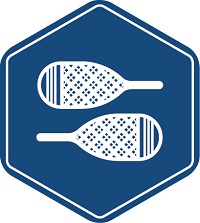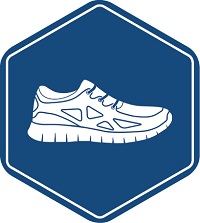|
   
   
         


|
Hello
Everyone, January
11,
2018
In this Issue:
- Rocks Wednesday Pm Run
- NEW for 2018- MOVE – The Kivi Park Fitness
Series
- Night Lights Race Series, 2018 hosted
by Walden Cross Country Fitness Club
- Cochrane runners go where penguins
fear to tread
- What Everyone Gets Wrong About Endurance
Training
- Upcoming Events:
Night Light Race Series, Cross Out Cancer Ski Loppet,
Sofie Loppet and Hypo Half
- Running Room Run Club Update:
SPECIAL CHALLENGE
- Track North News Sharon
Anderson Open track meet at the U. of Toronto
|
|
| |
|
Rocks!! Wednesday Run Club
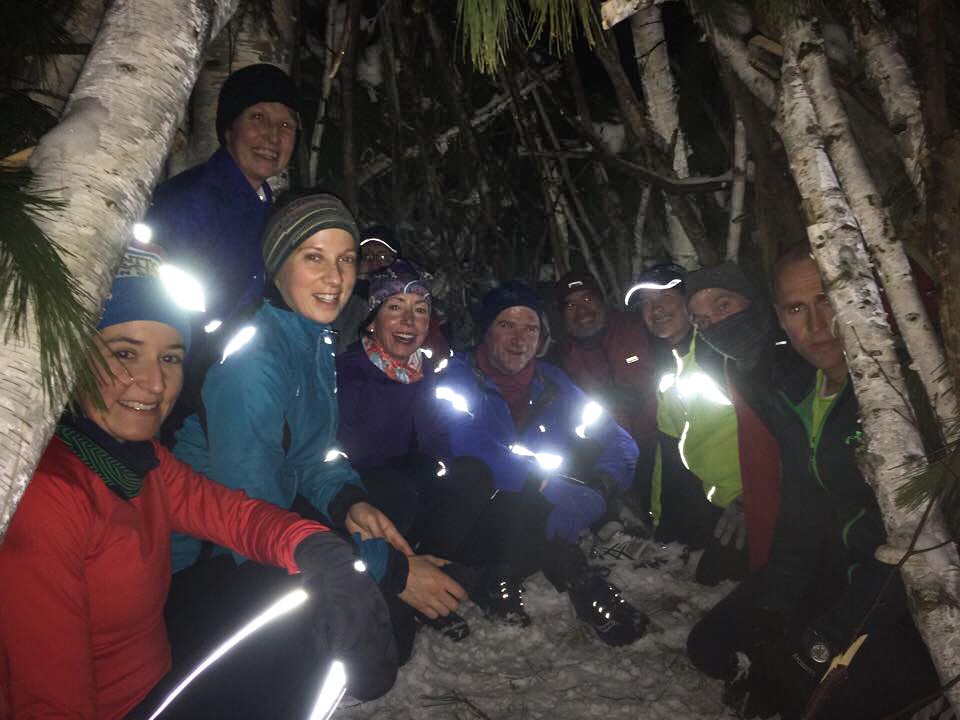
Rocks!! at shelter on Laurentian Lake trails
All
Photos Here
|
|
MOVE – The Kivi
Park Fitness Series

|
|
Night Lights Race Series, 2018
Hosted
by Walden Cross Country Fitness Club

Tuesday Nights this winter,
test your speed at our Night Lights Race Series. Open
to everyone - fast or slow, young or old - ski one event,
ski all four, just ski before you sleep!
January
16 - Skate Technique
January 30 - Skate Sprints
February 13 - Classic (With Headlamps)
March 6 - Skiathlon
Registration: takes place in the chalet
from 6:15 - 6:30. Races start at 7:00 PM.
Entry Fee: $10/race. Half price for
those 12 and under.
Prizes awarded following each race,
and for the overall series winners.
Contact us at program@waldenxc.ca for
more information.
|
|
|
Cochrane runners go where
penguins fear to tread
(with our Western Rock!!, Martin
Parnell)
Chris
Nelson, For The Calgary HeraldCHRIS NELSON, FOR THE CALGARY
HERALD
|
Cochrane's Marathon
Man Martin Parnell tries to warm up after completing 42
bone-chilling kilometres as part of a fundraiser to help
build an ice skating rink for girls in Afghanistan.
|
|
With wind-chill
temperatures nearing the -50 C mark, what better way to
spend New Year’s Eve than running a marathon?
Despite Sunday’s
frigid conditions, five determined runners did just
that, completing 42 kilometres as part of the eighth-annual
fundraising run/walk event at the Spray Lake Sawmills
Family Sports Centre in Cochrane. One brave runner even
tacked on an extra eight kilometres to hit the magic
50 mark.
The event is organized
each year by the town’s so-called Marathon Man,
Martin Parnell, with this year’s goal to raise
$5,000 for the Free To Run charity, a global organization
that is aiming to build an ice-skating rink for girls
in Bamyan, Afghanistan. The funds would also allow girls
from other parts of that country to participate in a
skating week in March.
Though the fundraising
goal fell short — a total of about $3,000 has
been collected — Parnell was astounded that so
many people turned out to participate in the series
of running and walking events, ranging from the full
marathon distance to a two-kilometre fun run for kids.
In all, 65 runners and
walkers took part, and while some took advantage of
the sports centre’s offer to use the indoor track,
almost half braved the elements outside.
“When I headed out in the morning it was minus-37
C and minus-48 C with the wind chill. I have never run
in those temperatures before. It must have been the
coldest marathon on the planet,” said Parnell,
who once ran 250 marathons in a single year for charity.
“People were asking
what was going to happen, were we going to cancel, and
luckily the sports centre allowed people to use the
indoor track.”
“But 30 of those
who turned up decided to go outside — men and
women, boys and girls, all totally bundled up. We just
did our thing. After I finished the marathon I was absolutely
frigid — everything was frozen, my eyelashes,
my eyebrows, anything that was sticking out,”
added Parnell.
Included in those who braved
the conditions were a group of youngsters who ran outside
for almost 30 minutes.
“The little kids
came out at the end and they did the two-kilometres
cookie run and then got their medals. Good for them.
They were out for 30 minutes in that weather —
they were real troopers.
“In all, it was an
incredible day. The spirit was amazing, as everyone
stayed positive. I read that the penguins at the Calgary
Zoo had been brought inside (on the weekend) —
it was too cold for the penguins but not for the crazies
out in Cochrane who did this run,” added Parnell.
He still hopes to reach
the $5,000 mark with two more weeks of fundraising to
go. Anyone wishing to help can visit Parnell’s
website at www.martinparnell.com.
|
|
|
What Everyone Gets Wrong About
Endurance Training
After more than 40 years as an athlete and coach,
it pains me to see people latch onto fitness fads, and I want
to clear a few things up
Scott
Johnston for Outside Online
|
Over the past 15 years, there
has been an explosion in fitness fads promoting all sorts
of dubious concepts. Perhaps the worst of all is the idea
that shorter, high-intensity interval training (HIIT)
can substitute for traditional long-duration aerobic base
work in endurance athletes who are looking to maximize
their performance.
To be clear, though many of this idea’s
proponents have emerged from CrossFit, I’m not singling
out that community. CrossFit can be an effective and transformational
approach to working out for some athletes. My beef is
with a few of its misguided adherents, some of whom claim
that their HIIT programs offer new breakthroughs in training
that allow athletes of all stripes to achieve the same
results with less training time. Others even go so far
as to say that putting in the long hours of endurance
work is bad for you. To make matters even worse, much
of the popular press—Outside occasionally included—seems
to promote these programs.
After more than 40 years as an endurance
athlete and coach, it pains me to see people latch onto
these fads. I want to clear a few things up.
The first thing to get straight is that
high-intensity-focused fitness programs such as CrossFit
and P90X bring nothing new to the theory or methodology
of training for endurance sports. Coaches have long known
about the benefits of HIIT. But the proponents of these
shortcuts frequently make claims that simply can’t
be backed up. Though research is often cited, it’s
important to remember that these studies shouldn’t
be taken out of context or extrapolated to infer performance
gains.
Often, the HIIT fitness studies that get
promoted are short term, use untrained or moderately trained
subjects, and often use VO2max for the measure of improvement
in the subjects. Several fundamental flaws exist here.
First, VO2max is known as a first-wave response to exercise,
meaning the adaptations responsible for its initial improvement
occur very quickly when one begins an exercise program.
Poorly trained individuals will naturally see a big gain
in VO2max in short-term studies, although the improvements
taper off dramatically after a few months of regular endurance
exercise. If a steady diet of HIIT is consumed for too
long, an athlete can even get less aerobically fit and
see a decline in VO2max.
More important, performance in endurance
sports is not well predicted by VO2max. I have coached
world-class cross-country skiers with rather mundane VO2max
numbers who have stood on World Cup and world championship
podiums. I’ve also coached cross-country skiers
with extraordinarily high VO2max numbers who, though racing
at the Olympic and World Cup level, are not especially
competitive. Bear in mind that cross-country skiing is
the sport with the highest demands on the aerobic system.
Endurance correlates much better with maximal sustained
work rate. Sports scientists have several names for this:
lactate threshold, anaerobic threshold, critical power/speed.
The takeaway: You don’t necessarily need to improve
your VO2max to improve your endurance performance. Finally,
these studies present the average improvement for the
study group. Some subjects may have have shown a decrease
in VO2max, but if the average shows an improvement, the
study is held up as proof of the efficacy of the training
protocols being studied.
The real world of endurance training is
much more complex. It is messier than a limited lab study,
but with enough data points, it can lead in the right
direction. Through a trial-and-error process spanning
many decades and literally millions of test subjects (that
is, athletes), coaches and competitors have tried myriad
training methodologies, rejecting the failures and modifying
and refining the successes until we have a very good idea
of how to get better.
Now is a good time to reiterate that I’m
referring to athletes looking to improve their endurance—someone
training for, say, a marathon, gravel grinder, or ski-mo
race, not someone simply trying to get some exercise for
the health benefits.
If HIIT were the only thing required to
become a successful endurance athlete, you could be sure
all the pros would be on board. After all, these athletes
are looking for every advantage they can get, and their
paychecks and careers hinge on their performance every
time they step up to the starting line. But instead of
doubling down on HIIT, the elite ranks of runners, cyclists,
cross-country skiers, rowers, and swimmers do just the
opposite. In 2010, a meta-analysis by Norwegian researchers
examined the actual distribution of training intensity
used by elite athletes across the full spectrum of endurance
sports. The conclusion: The best in the world complete
about 80 percent of their training volume at low intensity,
7 to 8 percent at moderate intensity, and about 12 to
13 percent at high intensity.
The 80/20 approach, as it’s called,
can seem counterintuitive. Most people think they need
to train hard all the time if they want to get faster.
In reality, however, training slower will make you faster.
The reasons come down to physiology. The sustainable duration
of high-intensity work mainly depends on the aerobic capacity
of your slow-twitch (ST) muscles. The more aerobically
adapted your ST fibers are, the greater the intensity
you can maintain for a longer duration.
That’s because the fast-twitch (FT)
muscles that provide the power and speed of high-intensity
work produce byproducts, some of which, when accumulated,
will slow and eventually stop those very same FT fibers.
You know this as fatigue and sense it as slowing down.
But the ST fibers take up and utilize some of those byproducts
as fuel, lessening their accumulation and hence the onset
of fatigue. The greater the capacity of the ST fibers
to remove these byproducts, the higher the intensity you
can sustain for longer durations. Sprinkle in some higher-intensity
sessions (key word: some) and you can lower the rate of
production of these fatigue-associated metabolites from
the FT fibers.
The hitch is that training the aerobic
qualities of these ST fibers is best accomplished by a
high volume of long-duration, low- to moderate-intensity
exercise. For many, the intensity should be so low that
it doesn’t feel like a workout at all.
Successful training for endurance sports
is highly nuanced. Athletes do require some HIIT in their
programs, but they need a tiny fraction of what is being
proposed by many in the fitness industry. The endurance
athlete will use HIIT as a supplement to—not a replacement
for—the aerobic base work that makes up the foundation
of their fitness.
It may not be very sexy training, but
it is what works. It has been proven on millions of starting
lines, and it forms the foundation of every world-class
endurance athlete’s training program. Professional
endurance athletes don’t follow fads. They train
by well-understood principles developed over more than
100 years.
Folks should stop looking for a shortcut
to fitness.
Scott Johnston is a former NCAA Division
1 swimmer and World Cup cross-country ski racer. In 1981,
he made the first alpine-style ascent of Ama Dablam. He
has coached World Cup cross-country skiers, elite ultrarunners,
U.S. Navy SEALs, and record-breaking alpinist Steve House.
Johnston currently teaches and coaches at UphillAthlete.com.
|
|
Upcoming Local Events
| January
16, 2018
Night Lights Race Series,
2018
Hosted
by Walden Cross Country Fitness Club

Tuesday Nights this
winter, test your speed at our Night Lights Race
Series. Open to everyone - fast or slow, young
or old - ski one event, ski all four, just ski
before you sleep!
Event #1 January
16 - Skate Technique
Registration: takes place in the
chalet from 6:15 - 6:30. Races start at 7:00 PM.
Entry Fee: $10/race. Half price
for those 12 and under.
Prizes awarded following each
race, and for the overall series winners.
Contact us at program@waldenxc.ca
for more information.
|
|
February
4, 2018

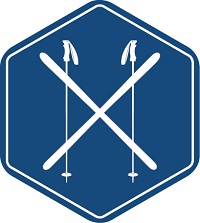
|
February
11, 2018
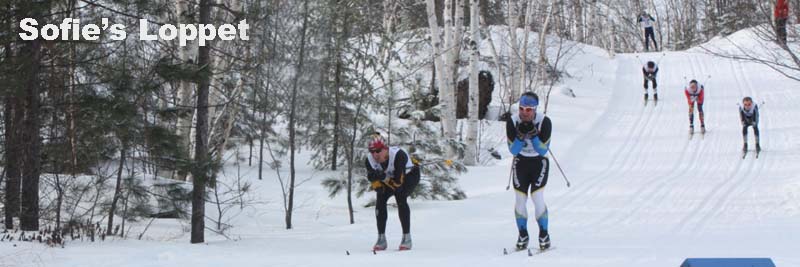
http://laurentiannordic.com
| The events
are on Sunday. Para nordic 1.5km - stadium and
shed. 5km - gully, shed, wall, extension, 1 lap.
16km - gully, shed, wall, sophies, extension,
two laps, 24km - 3laps. All races start on the
field and all races conclude with one lap of the
stadium.
Tentative start times on Sunday
are 10:00 for the para nordic and 10:30 for the
loppet. |
|
| SUDBURY
February 18th, 2018


Half Marathon,
10km and 5km Races
RACE LOCATION
Sudbury Running Room - View Map
Cedar Pointe Plaza
117-1984 Regent St
Sudbury, ON P3E 5S1
RACE TIME
9:00 a.m.
Event
Information and Registration
Course
Map
|
|
 |
|
Store News
Good afternoon fellow Runner's and Walker's
SPECIAL R.R. CHALLENGE
If you don't already know
you will now Running Room has introduced another run
club day Friday's at 6pm to add to Wednesdays and
Sunday's. The Run Club Challenge starting on January
10th spanning to the 31st, we are challenging you
to come out to Run Clubs to earn savings. Here is
the breakdown come to 5 run clubs throughout the month
earn 15% off come to 8 earn a 20% off coupon and if
you come to all 10 run clubs earn a 30% off coupon.
This Wednesday you will get a card that needs to be
intialed every Run Club by a staff member.
See you all Wednesday at 6pm.
Eric, Ania, Cassandra, Brendan, Sam, Erich, Caleb
Training Program NewsThere is supposed to be a Learn
to Run and 5km clinics starting Monday January 8th
at 6pm but I am going to push it back a week to the
following Monday January 15th to hopefully generate
more interest, I am sorry for the inconvenience this
may cause.
We have FREE run club
Wednesday nights at 6pm and Sunday mornings at 8:30am.
|
|
|
Track
North News - by Dick
Moss |
|
Sharon Anderson Open track
meet at the U. of Toronto
The Laurentian indoor
track team competed with a partial squad at the Sharon
Anderson Open track meet at the U. of Toronto indoor
facility this Saturday. They returned with one OUA
qualification and two medal finishes.
Rookie Liam Pedersen
(Kingston) qualified for the OUA championships by
placing 3rd in the 600m with a time of 1:23.12. Also
finishing third was Natasha Mayer (Sudbury) who ran
a 300m time of 42.78m, just .08 from the OUA standard.
Eric Roque’s (Sudbury) 60m time of 7.46 was
only .06 from the standard. Megan Crocker’s
(Toronto) 1500m time of 4:50.11 was only .11 from
an OUA qualification.
WOMEN
60m
30. Natasha Mayer, 8.37 (PB was 8.36 last year - last
chance
300m
3. Natasha Mayer, 42.78
600m
8. Nicole Rich, 1:48.25
1000m
4. Nicole Rich, 3:11.01
1500m
5. Megan Crocker, 4:50.11
MEN
60m
27. Eric Roque, 7.46
300m
46. Ali El-Sahli, 41.45 (PB)
600m
3. Liam Pedersen, 1:23.12 (Qualifies for OUAs)
1500m
6. Caleb Beland, 4:16.00
9. Liam Passi, 4:17.67
Michael Petta - DNF
3000m
4. Paul Sagriff, 9:08.36
Hey Vees &
Supporters,
Since the recent
Sharon Anderson meet was run on a 200m flat track
(considered a slow track), our times for races longer
than 60m have been converted and are now faster for
rankings and qualification purposes.
(A separate email
is being sent to explain the conversion process).
As a result, Natasha
Mayer and Megan Crocker are now qualified for the
OUA’s (along with Liam Pedersen). Natasha’s
300m time converted to a 42.19 for ranking and qualification
purposes. Megan’s 1500m time was converted to
a 4:47.24.
You can see the
rankings at: https://www.trackie.com/USports/TNF/Rankings/
Congrats to Natasha
and Megan!
Dick
“We consider this race a “rust-remover,”
said Associate Head Coach, Darren Jermyn. “It
always takes a meet or two to get back into racing
rhythm. This meet is valuable because it starts that
process early in the season. Having Liam Pedersen
qualify for OUAs was a bonus. And Natasha Mayer, Megan
Crocker and Eric Roque were just hundreds of a second
away. So, all-in-all, a very good start.”
The Voyageur track squad’s next
meet is the Ottawa Winter National on January 20th.
|
Dick Moss, Head Coach
Laurentian XC/Track Team
c/o Coach Moss <pedigest@cyberbeach.net>
Web: http://laurentianxctrack.com
Facebook: https://www.facebook.com/groups/laurentianxctrack/
|
 
For
information call me.
Vincent Perdue
341 Fourth Ave, Sudbury On. P3B-3R9
705-560-0424
vt perdue@cyberbeach.net
Proud
sponsor of the Sudbury Rocks!!! Race, Run or Walk for Diabetes
http://www.sudburyrocksmarathon.com/
HOME
| ABOUT US | CONTACT
| ARCHIVES | CLUBS
| EVENTS | PHOTOS
| RACE RESULTS | LINKS
| DISCUSSION
All photos images and content copyright Sudbury Rocks!!
|
















